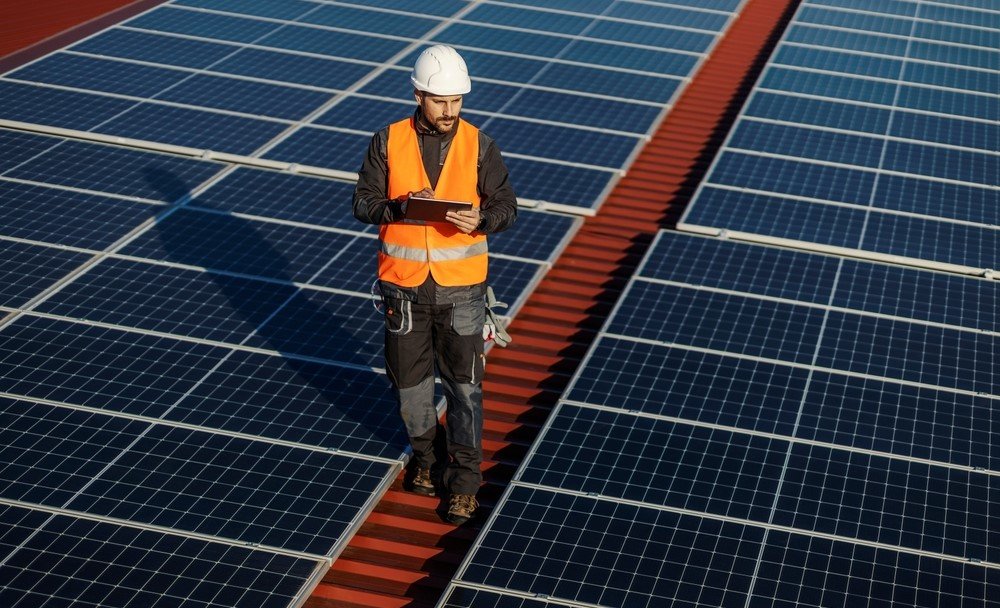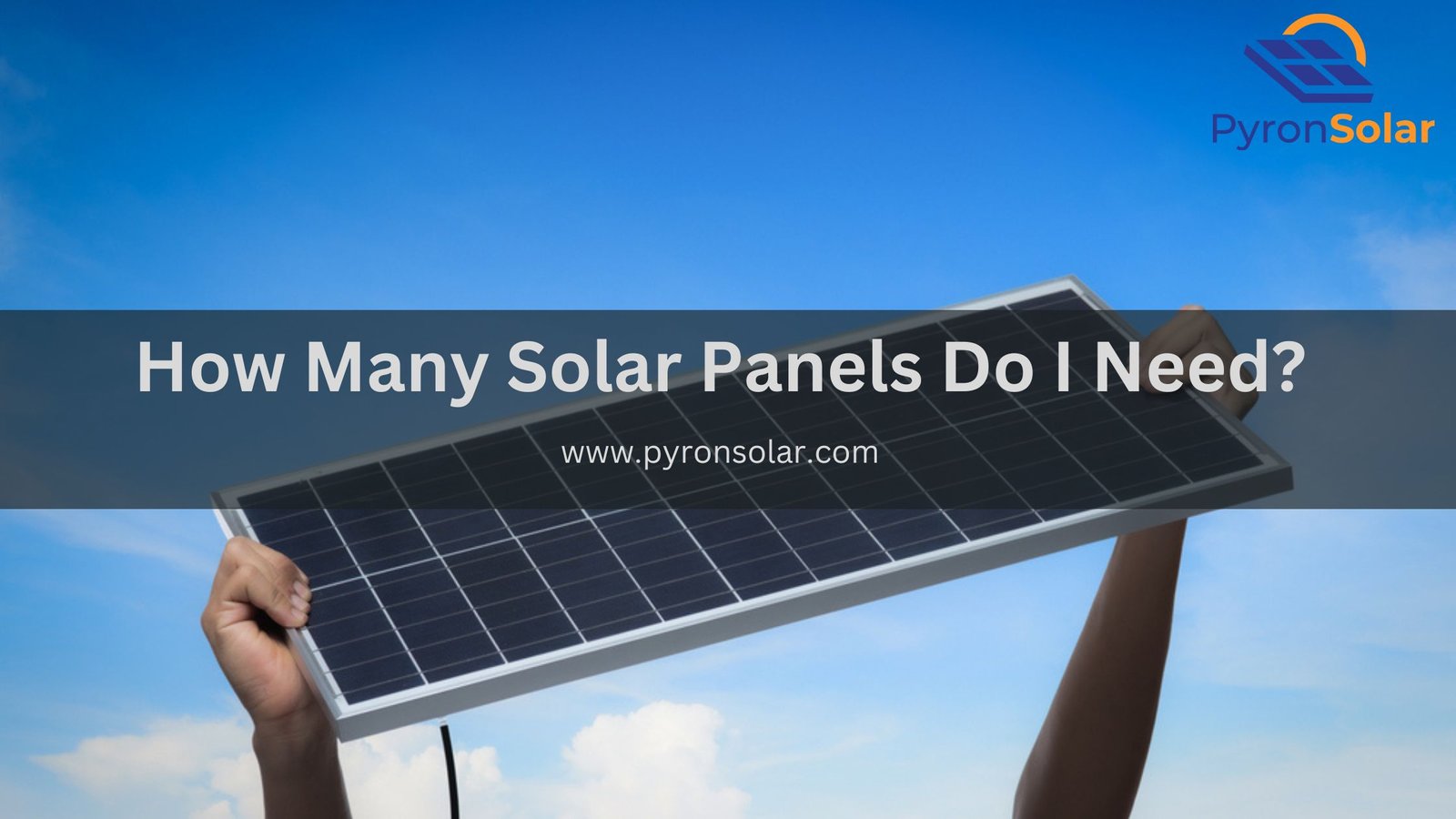In recent years, solar panels have increasingly been used worldwide by individuals because of their ecologically friendly qualities and their desire to cut their electricity bills. If you want to install solar panels in your house or other properties, you must ask yourself, how many solar panels do I require?
In the USA, an average residence requires 17-25 solar panels to eliminate electricity costs. However, the exact number of panels will depend on factors like electricity consumption, location, and panel specifications. Also, the average cost of solar panel installation is around $2.86 per watt, which equals somewhere between $15,000 to $25,000 (without the federal and state incentives).

Let us keep you equipped with the factors that determine the size and the number of your solar panels, and for calculating how many solar panels you need. Also, other factors like the amount of Sunlight, roof space, type of solar panel, size of solar panel, and solar panel efficiency determine the number of solar panels for installation.
Factors That Determine the Number and the Size of Your Solar Panels
If you are serious about solar panel installation, understanding the factors that determine panel size and quantity is extremely important. These factors can impact the efficiency, cost, and overall performance of your solar energy system. Here are a few primary factors that influence the size and choice of solar panels for your specific needs:
1. Annual Energy Consumption
The annual energy consumption refers to your household or business electricity usage in a year. Usually, it is measured in kilowatt-hours (kWh). If your annual energy consumption is higher, then you will need more solar panels to reduce your electricity usage. For example, if 10,000 kWh is your annual energy consumption, you will require 30-40 solar panels of 250 watts capacity.
2. Wattage of Solar Panel
In simple words, the wattage of a solar panel means the amount of electricity that a single solar panel can generate while operating under ideal conditions. It is often measured in Watts (W). Generally, a Higher-wattage panel will generate more electricity, which means that you will just need a few of them to meet your energy needs. For example, if you choose a higher wattage panel of 400W, you will require fewer panels than a 250W panel for the same energy requirement.
3. Production Ratio
It is important to know the production ratio, which means the ratio of the actual electricity production of your solar panels to their expected production. However, it gets impacted by factors such as — the panel’s angle and orientation, local climatic conditions, and shading of obstacles, structures, or trees. You need to understand that a higher production ratio simply means that your panels are generating electricity efficiently. For example, if your solar panels operate at a production ratio of 0.75, it means they can produce 75% of their maximum output.
How to Calculate the Number of Solar Panels I Need?
To calculate the number of solar panels that you need, you can use this formula:
Formula:
- System size: The power from solar panels is measured in kilowatts (kW).
- Production ratio: The amount of electricity produced by panels, depending on sunlight ((on average, between 1.3 and 1.6).
- Panel wattage: The output electricity of a solar panel under normal conditions that is measured in watts (W).
For Example:
Assume that you have a system size of 11,000 kW, production ratio of 1.4, and panel wattage of 300 W. Now you must use the formula as mentioned above:
Number of panels = 11,000 kW / 1.4 / 300 W = 26.19
According to this formula’s result, you will require around 25 to 27 panels. However, you must make a note that the exact number of panels will keep varying based on your personalized needs and home electricity requirements.
Alternative Calculation Method
However, there is another alternative calculation method that people often don’t use it. All that you need to do is check your monthly electricity bills to determine your consumption. Now multiply that consumption by the hours of sunlight that comes to your home. Further, divide that result by the wattage of panels that you are thinking of considering.
Other Factors That Determine the Number of Solar Panels I Need
To determine the number of solar panels, here are the other factors such as the amount of Sunlight, Roof Space, Type of Solar Panel, Size of Solar Panel, and Solar Panel Efficiency.
Amount of Sunlight
The geographic location tends to play a very important role in determining the amount of sunlight it receives. It is measured in terms of peak sun hour, which is defined as the intensity of sunlight (solar irradiance, or brightness) in 1 hour reaching an average of 1,000 watts per square meter.
However, other factors like — Earth’s tilt, rotation, and orbit bring fluctuations in the amount of sunlight in different regions all through the year.
In the USA, the states with the highest average peak sun hours are:
- Arizona
- Nevada
- New Mexico
- California
These regions of the United States enjoy 7-8 peak sun hours daily.
In the USA, the states with the least average peak sun hours are:
- Alaska
- Indiana
- Michigan
- Ohio
- Washington
These regions of the United States have just 2.5-3.5 peak sun hours daily.
Homeowners can assess the solar potential of their property using various methods here are some of the major factors to consider such as — Location, Shading, Orientation, Roof Condition, Type, Solar Maps, Site Surveys, Online Tools, and Energy Consumption.
Roof Space
Roof space is one of the important factors that help in determining the installation possibilities for a certain number of solar panels, depending on the roof area. On top of that, the roof placement and angle influence the solar energy production efficiency. Therefore, to install more panels and get high energy generation, you will require huge roof space.
Shaded areas or structures like chimneys and skylights impact the panel placement and solar panel output, as these structures create shadows and reduce the amount of sunlight reaching the panels, decreasing their efficiency. Furthermore, these structures will also restrict the space for panel installation. You must keep in mind that, if you need your solar panels to perform good optimally, then it has to get direct exposure to sunlight.
For homes with limited roof space, there are a few solutions available:
- High-efficiency solar panels: These panels generate more electricity per square foot compared to the standard panels and are the best option for limited-space roofs.
- Solar panel mounts: Adjustable mounting systems improve your panel’s angle, maximizing the sun exposure.
- Ground-mounted solar panels: If your roof doesn’t support solar panel installation, then ground-mounted systems are the best alternative for your yard.
- Community solar projects: If installing solar panels isn’t feasible, you can subscribe to a community solar project, which allows multiple participants to benefit from a single, large-scale solar array.
Remember, it’s essential to consult with a solar installation professional to understand the best options for your specific situation.
Type of Solar Panel
Here are the 3 major types of solar panels with special characteristics that help us to determine the exact number of panels depending on factors such as — efficiency, power output, cost, and suitability:
Monocrystalline solar panels:
- Efficiency: 15% to 24%
- Power Output: High power output per square foot (18–20 watts per sq ft)
- Cost: Extremely expensive ($1.20 to $1.55 per watt)
- Suitability: Perfect for limited-roof space homes.
Polycrystalline solar panels:
- Efficiency: 13% to 16%
- Power Output: Low power output per square foot (16 -18 watts per sq ft)
- Cost: Less expensive compared to Monocrystalline solar panels ($0.90 to $1.50 per watt)
- Suitability: Perfect for large roof space homes and low energy rate areas.
Thin-film solar panels:
- Efficiency: 10% to 12%
- Power Output: 18–20 watts per square foot.
- Cost: Less expensive ($0.50 – $1.50 per watt)
- Suitability: Perfect for large-scale installation (Without space limitation).
Finally, homeowners can choose the best solar panels depending on the following factors such as:
- High Efficiency and Limited Space: Monocrystalline solar panels
- Budget Friendly: Polycrystalline solar panels
- Adaptability: Thin film solar panels
- Higher Energy Needs: Monocrystalline solar panels
- Lower Energy Needs: Polycrystalline and thin film solar panels
Size of Solar Panel
The standard dimensions of a 60-cell solar panel are 66 inches long ×39 inches wide, are used for residential purposes and produce 300–400 watts of power approximately. Whereas, for commercial purposes, a 72-cell solar panel is 77 inches long ×39 inches wide and generates 415–525 wattages of power.
Several factors such as temperature, shading, soiling, sunlight intensity and mismatched modules affect the output of solar panels. Mainly, the variations in cell photon that produces a significant amount of current influence the power output as array current, which is controlled by the least powerful cell.
Solar Panel Efficiency
Solar panel efficiency refers to the solar panel’s capability to convert sunlight into usable electrical power, which is an important factor in determining the amount of solar power panels can generate. Thus, having a higher efficiency results in producing more power output from the same amount of sunlight, which also leads to better energy savings.
Usually, the Efficiency ratings are measured in percentage, and they tell you how much amount of the sunlight that is reaching the panel is transforming into electricity. For example, a 20% efficiency rating means that 20% of the sunlight hitting the panel is processed into consumable electricity. Therefore, these efficiency ratings help us to determine the energy production capability of solar panels. Hence, having a higher efficiency rating means getting more energy from the panel.
Also, you need to understand that there is a direct correlation in-between higher efficient solar panels and a lower number of panels required. However, more efficient panels are capable of generating the same amount of electricity as less efficient panels do (but in a smaller space). So, if you have a very limited roof space, then by choosing high-efficiency panels you will need less number of panels to meet your energy requirements.
High-efficiency solar panels are comparatively more expensive than other competitive, less-efficient solar panels. In the long run, these high-efficiency panels will result in greater savings because of their high energy output.
However. Government incentives make these panels more affordable for businesses and homeowners by offering tax credits and rebates. As a result, these incentives boost solar energy adoption, which also leads to the environment’s long-term well-being.
Conclusion
Although the formula and efficiency ratings indicate a calculative estimate for installation, still they are not completely accurate in determining the exact number of solar panels required. This happens because it doesn’t consider other influencing factors such as — shading, panel positioning, and local weather conditions, which impact the solar panel performance.
While planning a solar installation it is important to carefully consider many important factors which primarily include solar panel efficiency, but it is not the only one to be considered. Furthermore, factors like — panel cost, available roof space, local climatic situation, and possibilities for government incentives should be considered and only then you will be able to make the perfect decision, which will greatly improve your solar energy production, and savings, leading to a greener future.
Ray is an avid reader and writer with over 25 years of experience serving various domestic and multinational private and public energy companies in the USA.

